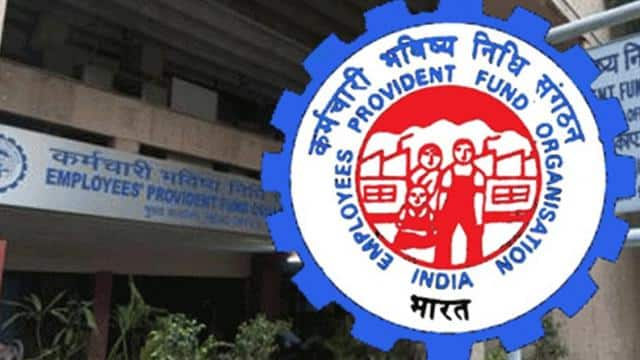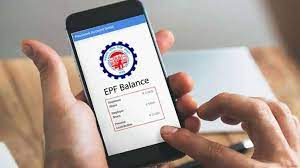An EPF account becomes inoperative if there are no contributions for 36 months, but the balance still earns interest. The EPFO has made the process of unblocking your account smoother, with digital tools, including OTP verification and claim tracking through the UMANG App. Keep your KYC information updated to avoid delays and utilize the EPFO’s grievance redressal system if needed.
Managing your Employees’ Provident Fund (EPF) account can feel like a task that you keep putting off—especially if your account has gone dormant or you’re unsure about how to handle claims.
However, with recent updates from the Employees’ Provident Fund Organization (EPFO), the process has become easier and more streamlined. Whether your EPF account has become inactive or you’re just trying to settle your claims, there’s good news: you can handle almost everything online without needing to visit an EPFO office.
If you’re not familiar with the process or need to reactivate an inoperative account, this guide will walk you through everything you need to know.
Read More: EPFO: What are steps to check EPS balance online?
What is an Inoperative EPF Account?
An EPF account becomes inoperative when there are no contributions made by the employee or the employer for a continuous period of 36 months. Such accounts are typically those where employees have left their jobs and not transferred or withdrawn their EPF balance. However, it’s important to note that while these accounts may become inoperative, the balance continues to accrue interest as per recent amendments.
How to Unblock an Inoperative EPF Account
If your EPF account has become inoperative, the EPFO has made it relatively straightforward to reactivate and unblock the account. Here’s what you need to do:
Link Your Aadhaar with Your UAN (Universal Account Number):
One of the most important steps is to ensure that your Aadhaar is linked to your UAN. You can do this by logging into the EPFO Member Portal and updating your KYC details.
File a Transfer Claim via EPFO Portal:
If you have moved jobs, you need to transfer your EPF balance from the old account to your new employer’s EPF account. You can do this by logging into the EPFO Unified Portal, submitting a transfer request, and verifying it through your new employer.
Read More: EPFO Withdrawal: Step-By-Step Guide To Claim Your Funds Without Employer’s Approval
Submit the EPF Claim Form (Form 13):
If you’re unable to transfer your account through the portal, manually submitting Form 13 can help unblock your inoperative account. This form can be submitted either through your current employer or directly to the EPFO office.
Update Your Bank Account Details and KYC Information:
To ensure smooth processing, make sure your bank account details are updated in the EPF portal, along with your PAN card and Aadhaar information.
File a Grievance if Necessary:
If you face any challenges during the process of unblocking your account, the EPFO provides a Grievance Redressal Portal where you can lodge complaints or track the status of your requests.
How to Settle EPF Claims
Once your EPF account is active, or if you wish to withdraw funds from an operative account, the EPFO has made the process simple and more digital-friendly. Here’s how you can settle your claims:
Eligibility for Withdrawal:
Full Withdrawal: You can opt for full withdrawal of your EPF balance upon retirement or if you remain unemployed for more than two months.
Partial Withdrawal: You are also eligible for partial withdrawal under specific circumstances like medical treatment, marriage, house purchase, or education.
Read More: EPFO Pension: EPS has 7 different types of pensions – Here’s a complete overview
Submit Your Claim Online:
The EPFO offers an online claim settlement process via the Unified Member Portal. After logging in with your UAN and password, follow these steps:
- Select the ‘Online Services’ tab and choose ‘Claim (Form-31, 19, 10C & 10D)’.
- Verify your bank details and Aadhaar, and then select the reason for withdrawal.
- Upload any necessary documents (for partial withdrawals), and submit your claim.
Verify through OTP:
Your claim will be authenticated through an OTP sent to your registered mobile number linked with your Aadhaar.
Track Claim Status:
You can track the status of your claim through the EPFO portal or the UMANG App, a government-run application that provides various services, including EPF claim tracking.
Key Points to Remember
Inactive Accounts Now Earn Interest: Previously, inoperative accounts didn’t earn interest. However, as per a 2016 amendment, even dormant accounts continue to accumulate interest, which is good news for long-term savers.
Unified EPF Account: EPFO has made it mandatory to use UAN, which ensures that you can link all your EPF accounts across different employers. This helps in better management and tracking of your savings.
Grievance Redressal System: The EPFO has a dedicated portal to address grievances related to EPF claims, inoperative accounts, and KYC issues.
Avoid Delays by Updating KYC: Always ensure that your KYC details (Aadhaar, PAN, and bank account) are updated in the EPFO system to avoid delays in claim settlements.
The EPFO has streamlined its processes to make managing your EPF account easier than ever. From unblocking inoperative accounts to settling claims, most processes can now be handled online, reducing the need to visit EPFO offices. Remember to ensure your KYC is up to date and your Aadhaar is linked. Also, make sure to transfer old EPF accounts to your current one.





































